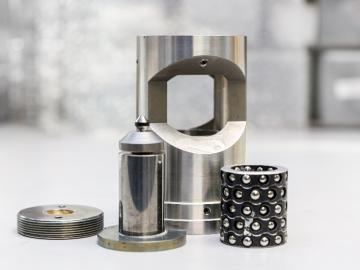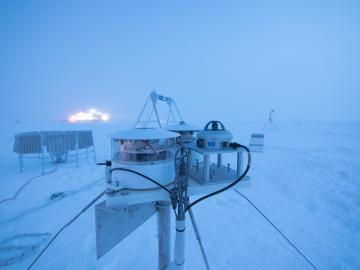
Filter News
Area of Research
- Advanced Manufacturing (4)
- Biology and Environment (14)
- Computational Biology (1)
- Computational Engineering (2)
- Computer Science (4)
- Energy Science (19)
- Fusion and Fission (2)
- Fusion Energy (6)
- Isotopes (1)
- Materials (12)
- Materials for Computing (2)
- Mathematics (1)
- National Security (1)
- Neutron Science (24)
- Nuclear Science and Technology (4)
- Supercomputing (10)
News Type
News Topics
- (-) Artificial Intelligence (16)
- (-) Biomedical (11)
- (-) Composites (11)
- (-) Fusion (9)
- (-) Machine Learning (14)
- (-) Neutron Science (27)
- (-) Summit (8)
- 3-D Printing/Advanced Manufacturing (34)
- Advanced Reactors (13)
- Big Data (17)
- Bioenergy (17)
- Biology (21)
- Biotechnology (4)
- Buildings (21)
- Chemical Sciences (13)
- Clean Water (14)
- Computer Science (42)
- Coronavirus (11)
- Critical Materials (12)
- Cybersecurity (3)
- Emergency (1)
- Energy Storage (32)
- Environment (48)
- Exascale Computing (1)
- Fossil Energy (1)
- Frontier (1)
- Grid (22)
- High-Performance Computing (12)
- Hydropower (6)
- Irradiation (2)
- Isotopes (5)
- ITER (3)
- Materials (36)
- Materials Science (34)
- Mathematics (3)
- Mercury (3)
- Microscopy (11)
- Molten Salt (5)
- Nanotechnology (12)
- National Security (3)
- Nuclear Energy (19)
- Partnerships (2)
- Physics (4)
- Polymers (10)
- Quantum Computing (5)
- Quantum Science (11)
- Security (1)
- Simulation (9)
- Space Exploration (10)
- Statistics (1)
- Transportation (36)
Media Contacts

Researchers at Oak Ridge National Laboratory have identified a statistical relationship between the growth of cities and the spread of paved surfaces like roads and sidewalks. These impervious surfaces impede the flow of water into the ground, affecting the water cycle and, by extension, the climate.

Oak Ridge National Laboratory researchers combined additive manufacturing with conventional compression molding to produce high-performance thermoplastic composites reinforced with short carbon fibers.

Researchers at Oak Ridge National Laboratory’s Spallation Neutron Source have developed a diamond anvil pressure cell that will enable high-pressure science currently not possible at any other neutron source in the world.
A study by Oak Ridge National Laboratory, the University of Copenhagen, the National Park Service and the U.S. Geological Survey showed that hotter summers and permafrost loss are causing colder water to flow into Arctic streams, which could impact sensitive fish and other wildlife.

A new tool from Oak Ridge National Laboratory can help planners, emergency responders and scientists visualize how flood waters will spread for any scenario and terrain.

Algorithms developed at Oak Ridge National Laboratory can greatly enhance X-ray computed tomography images of 3D-printed metal parts, resulting in more accurate, faster scans.
Oak Ridge National Laboratory and collaborators have discovered that signaling molecules known to trigger symbiosis between plants and soil bacteria are also used by almost all fungi as chemical signals to communicate with each other.


Researchers at Oak Ridge National Laboratory were part of an international team that collected a treasure trove of data measuring precipitation, air particles, cloud patterns and the exchange of energy between the atmosphere and the sea ice.

Scientists from Oak Ridge National Laboratory used high-performance computing to create protein models that helped reveal how the outer membrane is tethered to the cell membrane in certain bacteria.


